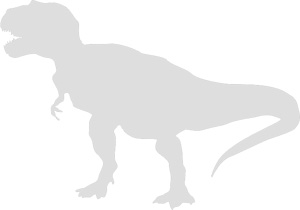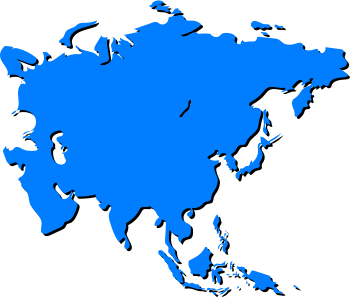Every month, 100,000 readers use the Dinosaur Database, but we receive no support from you. Developing and updating the database requires a lot of work. If you want it to remain open and be updated, please support us via the "Buy us a coffee" button available on every page or via the Support page.
Dinosaur: Dzharacursor bissektensis

| Length*: | 3.75 m | 12.3 ft |
| Weight*: | 150 kg | 331 lb |
*The largest known specimen
Description
Dzharacursor bissektensis
Dzharacursor bissektensis was a basal ornithomimid theropod that lived during the Late Cretaceous (Turonian stage), approximately 92 million years ago. It was discovered in the Bissekty Formation of Uzbekistan, specifically in the Dzharakuduk locality within the Kyzylkum Desert. The genus name combines “Dzharakuduk,” the site of discovery, with “cursor,” Latin for “runner,” highlighting its adaptations for fast movement. Dzharacursor represents one of the earliest-diverging members of Ornithomimidae and is among the oldest known ornithomimids in Asia.
Physical Characteristics
Dzharacursor bissektensis was a medium-sized ornithomimid, estimated to have been around 3–3.75 meters (10–12.3 ft) in length and weighed approximately 100 kg – 150 (220–330 lb). Like other ornithomimosaurs, it had a lightweight, gracile build with long legs adapted for fast running.
Key skeletal features include:
- Elongated hind limbs: Indicating a highly cursorial lifestyle.
- Slender metatarsals: Suggesting an efficient locomotion mechanism.
- Primitive forelimb structure: Retaining features seen in early ornithomimosaurs.
- Frontal bones with a V-shaped suture: Distinguishing it from more derived ornithomimids.
- Anterior dorsal vertebrae with ventral keels: A feature not seen in all ornithomimosaurs.
- Metacarpal I subequal in length to metacarpal II: Unlike most ornithomimosaurs, where metacarpal I is reduced.
Its combination of primitive and derived features places it as one of the earliest-diverging ornithomimids.
Diet and Feeding Habits
Like other ornithomimosaurs, Dzharacursor was likely an omnivore or herbivore. It had a toothless beak, which suggests it may have fed on a mix of plant material, small animals, and possibly insects. Its long neck allowed it to browse for vegetation at various heights. While direct evidence of diet is lacking, comparisons with related taxa suggest it may have had gastroliths (stomach stones) to aid in digestion.
Habitat and Distribution
Dzharacursor bissektensis lived in what is now the Kyzylkum Desert of Uzbekistan, specifically in the Bissekty Formation, which dates to the Late Cretaceous (Turonian stage). During this time, the region was a warm, semi-arid environment with river channels, floodplains, and forested areas.
The Bissekty Formation contains a diverse assemblage of dinosaurs, including:
- Large theropods (Tyrannosauroidea, Carcharodontosauria)
- Sauropods (Titanosauria)
- Hadrosauroids
- Ankylosaurs
- Oviraptorosaurs, troodontids, and dromaeosaurs
Dzharacursor likely occupied a niche similar to that of later ornithomimids, using its speed to evade predators and forage across open floodplain habitats.
Behavior and Social Structure
There is no direct evidence of social behavior in Dzharacursor, but related ornithomimosaurs have been found in groups, suggesting possible herd behavior. Given its adaptations for running, it was likely a highly mobile dinosaur, using speed as its primary defense mechanism. The presence of multiple individuals in the fossil record suggests it may have been relatively common in its ecosystem.
Discovery and Research
The holotype of Dzharacursor bissektensis (CCMGE 479/12457) consists of a juvenile right femur. Additional material includes cranial bones, vertebrae, limb elements, and manual unguals, allowing for a detailed anatomical assessment. The fossils were first described by Lev Nesov in 1995 as Archaeornithomimus(?) bissektensis. However, later studies by Averianov & Sues (2025) re-evaluated the material and assigned it to a new genus, Dzharacursor.
The discovery is significant as Dzharacursor is one of the oldest known ornithomimids and provides key insights into the early evolution of the group. Phylogenetic analysis places it at the base of Ornithomimidae, more derived than Archaeornithomimus asiaticus but more primitive than Sinornithomimus.
Significance and Interesting Facts
- Dzharacursor bissektensis is one of the earliest-diverging ornithomimids known.
- It is the most common non-avian theropod in the Bissekty Formation, suggesting it was a successful species in its ecosystem.
- It was originally misidentified as Archaeornithomimus, but later studies recognized it as a distinct genus.
- It lived in a diverse environment alongside tyrannosauroids, carcharodontosaurs, and hadrosaurids.
- Its discovery helps confirm an Asian origin for Ornithomimidae.
Locations
Sources
Material: Holotype CCMGE 479/12457. Right femur (juvenile, holotype), premaxilla, frontal bones, quadrate, anterior cervical vertebrae, posterior cervical vertebrae, anterior dorsal vertebrae, posterior dorsal vertebrae, sacral vertebrae, anterior caudal vertebrae, posterior caudal vertebrae, scapula, coracoid, humerus, ulna, metacarpal I, metacarpal II, metacarpal III, manual preungual phalanges, manual ungual phalanges, ilium, pubis, ischium, tibia, fibula, astragalus, distal tarsals, metatarsal II, metatarsal III, metatarsal IV, pedal preungual phalanges, pedal ungual phalanges
References: Averianov, A. O., & Sues, H. -D. (2025). "A new ornithomimid theropod from the Upper Cretaceous Bissekty Formation of Uzbekistan". Journal of Vertebrate Paleontology, e2433759
Nesov, L. A. (1995). "Dinozavri severnoi Yevrazii: Novye dannye o sostave kompleksov, ekologii i paleobiogeografii". Institute for Scientific Research on the Earth's Crust. St Petersburg State University: 1–156



